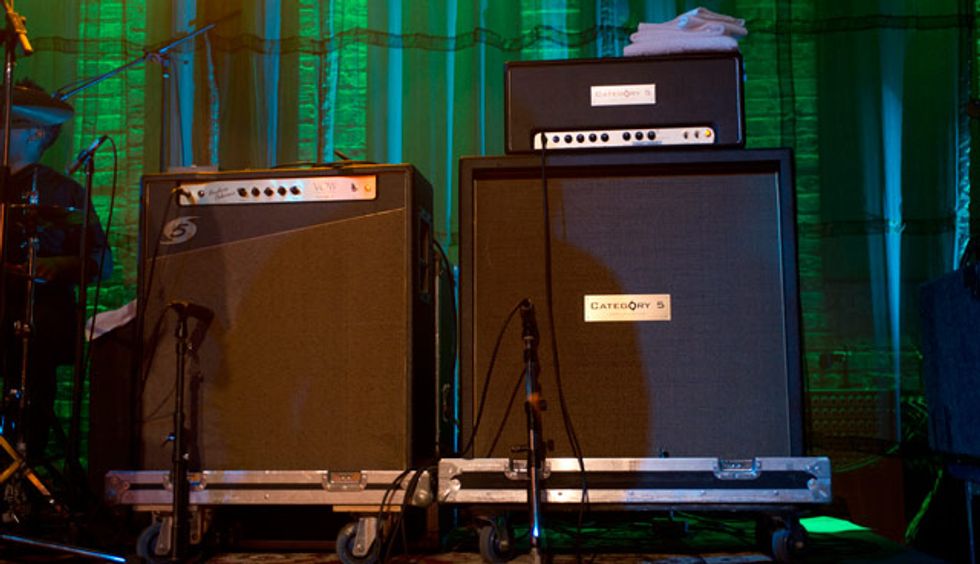Interview: Anders Osborne - Feedback, Overtones, & Jagged Electricity
Furious slide-wielding Swede Anders Osborne talks about conquering his demons, taking time with solos, and reconciling his electric live persona with his considerable singer-songwriter skills.
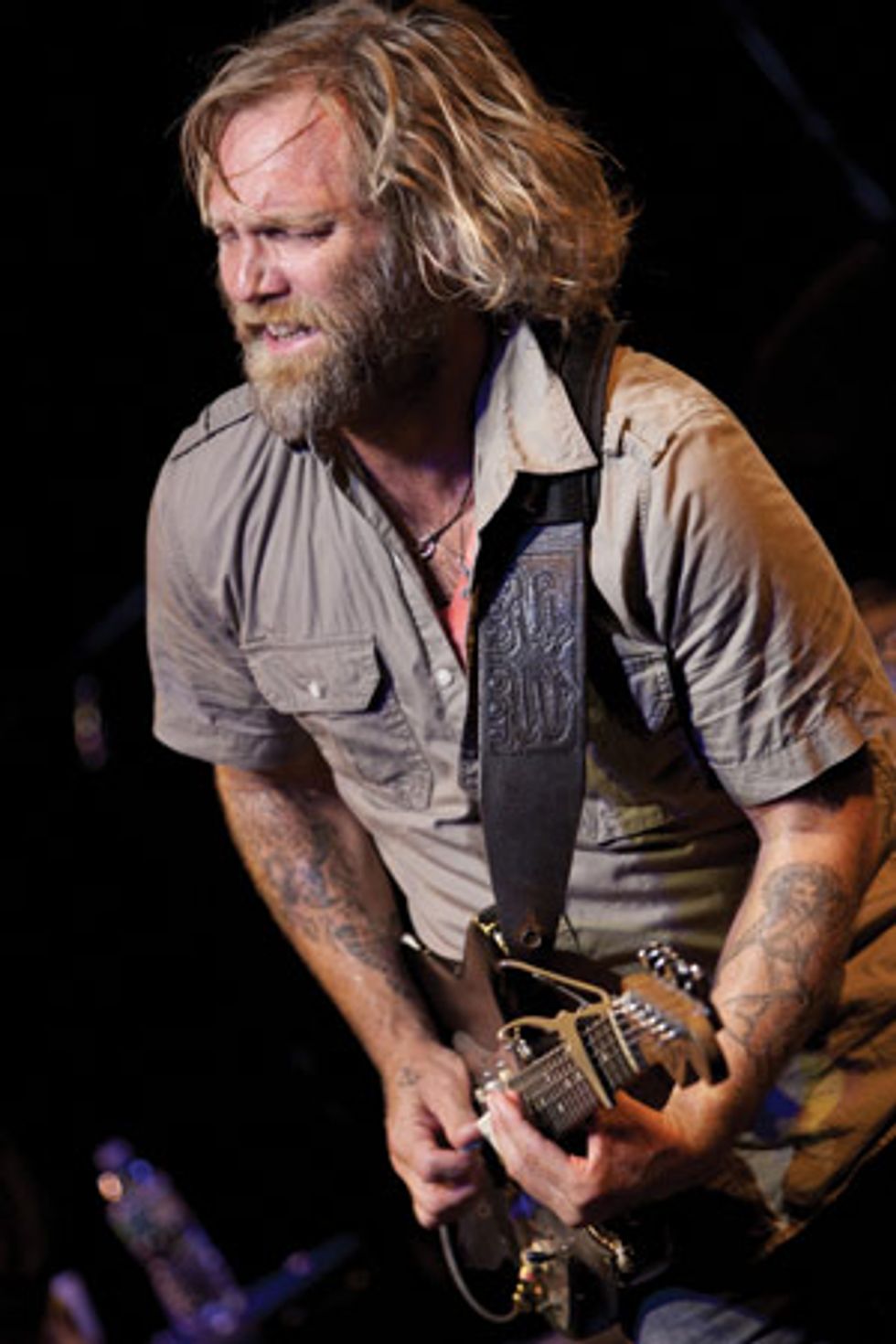
Photo by Jayne Tansey-Patron
Given the fact that he was born in Uddevalla, a city on the southeastern coast of Sweden, you’d hardly expect Anders Osborne’s voice to be flecked with a Cajun twinge. Things are not always what they seem with the 45-year-old singer-songwriter/guitarist—but that’s probably to be expected, considering he and his acoustic guitar spent his late teens traveling everywhere from the former Yugoslavia to France and Israel before coming to the United States and settling in New Orleans almost 30 years ago.
“When people ask why I sound like I’m from New Orleans, I tell them it’s because that’s where I learned to speak English,” he explains. It’s also where he began his music career in earnest, first by busking in the French Quarter, and then building up a following in local clubs. “I had no dreams or visions of where my music would go at first,” he says. “I was just playing on the streets. But then things slowly happened.”
Osborne eventually signed to a small New Orleans label, Rabadash, and made his recorded debut in 1989 with Doin’ Fine. Throughout the 1990s and early 2000s, he released a series of critically well-received albums that combined his love for rock, jazz, blues, folk, country, and roots music, and also made a name for himself as a professional songwriter—most notably as cowriter of Tim McGraw’s 2003 country hit “Watch the Wind Blow By.”
But the last few years have seen a distinct shift in Osborne’s sound. His most recent records—2010’s American Patchwork and the new and excellent Black Eye Galaxy—continue to feature his characteristic mix of hummable acoustic and electric numbers, but the electric-guitar based songs are now decidedly brawnier and infused with layers of squalling 6-string work, much of it on slide. Osborne credits this stylistic shift to several factors, including a change in attitude and perspective following a drawn-out and hard-won battle with substance abuse. But it’s also because his records are now a truer reflection of his live shows, which have always been heavily focused on his guitar playing.
On a broader level, it can perhaps be said that Osborne’s sonic progressions are the consequence of a lifelong restless spirit. When he made the decision as a teenager to leave his home in Sweden, he recalls, “I remember waking up on a Tuesday and saying, ‘I have to get the [expletive] out of here. I can’t stay another minute.’ And on Thursday I hitchhiked out.” Likewise, when it comes to music, he says, “I’m still searching all the time for things to inspire me. For most people, the stuff you listen to when you’re 10 to 14 years old, that tends to be the only music you really ever purely love. After that, you just analyze and criticize. You’re constantly comparing to your first musical impressions. I’m trying to step out of that as much as I can. I’m still trying to find that next thing.”
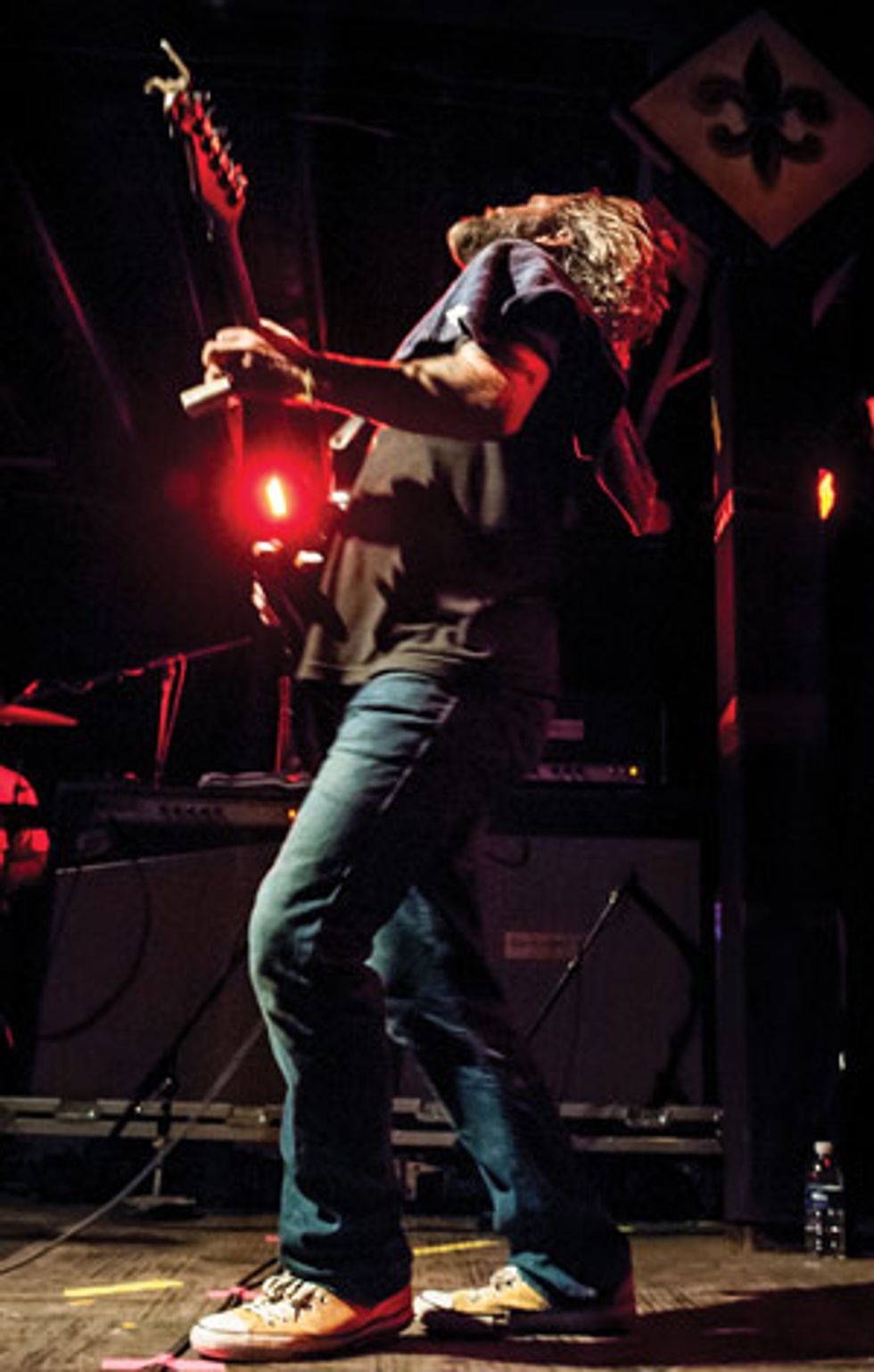
Photo by Jerry Moran
You pull from numerous American
music styles. As a native Swede who’s
lived all over the world, do you feel that
approaching these genres from the perspective
of an outsider has had an effect
on how you interpret them?
That’s an interesting thing and I’ve thought
about it before. As far as considering my
own origins in terms of the type of music
I play, the truth is I don’t really know how
it fits together. If I were to speculate, I’d
simply say that if the language of music
is something that comes naturally to you,
then you don’t separate things very much.
You know your geography, you know where
you’re from, but stylistically you don’t consider
that at all as you’re taking in influences.
Me being a musician—as opposed to,
say, an author or a carpenter or something
like that—what I do is I interpret the language
of music. That’s the world I’ve always
been in. When I heard Robert Johnson
at a certain age, it did something to me.
When I heard ZZ Top or Kiss or Sweet, it
did something else to me. Then later on
it was John Coltrane, Neil Young, Dylan.
You bring them all in and then you start to
eliminate the ones that don’t stick. What
remains becomes your language.
Black Eye Galaxy is your most assertive
and guitar-centric record to date. You
employ a lot of distorted tones, and several
of the songs feature extended solos.
What led you in that direction?
I think partly it was coming to an understanding
of what I do well. As I’ve changed
my spiritual path and stopped abusing
myself mentally and physically with the
other stuff, everything cleared up a little bit.
You recognize what you’re good at and what
feels good. It’s become more and more evident
to me over the last few years. I think
it started with American Patchwork, where
Stanton [Moore, drums] brought out a lot
of small details in my playing. One of those
was to really distort and crank the guitars
in the way he perceives I do it onstage.
He said, “Let’s work on your tone so that
you don’t get too sweet and too cutesy on
the record.” We just kind of developed a
sound. I hadn’t done that since the mid
’90s, which was the last time I had a big
guitar rig. From doing that and gaining a
better understanding of what I liked—and
also what people responded to in the live
show—when it came time to make this
record, I made sure I had material that
would work well onstage.
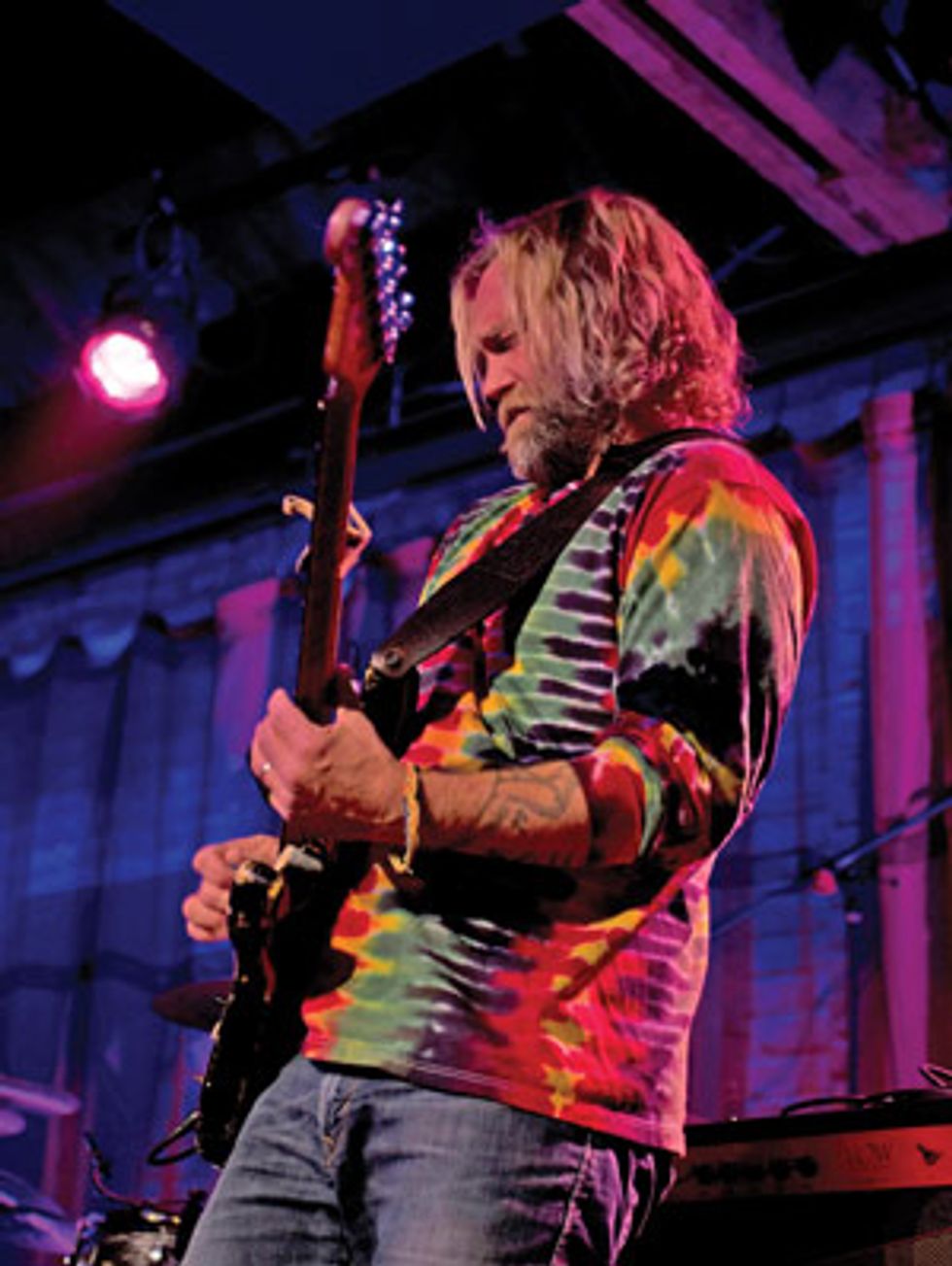
Photo by Paul Natkin
To what extent are the new solos improvised—especially on the 11-minute
title track?
The whole middle section of the title track
is all improv. We just worked out what
would serve as home base—where we’d
come together on a riff or a line—and
then go on to the next part. We were all
playing together in the studio, and we’d get
to a certain point in the song and just look
at each other, nod, and start the count
off for everyone to go into a lick together.
Then we’d go on to the next improvisation.
I think there are three home bases in
that song, and having those frees you up.
You know that, whenever you’re through
saying what you need to say, everyone will
come together.
This record is very Neil Young-like in the
sense that your acoustic work is often
quite clean and exacting, while your
electric playing is more ragged and
unorthodox.
I can see that. Neil is definitely an influence
in terms of that wandering approach
on electric. I like to have that element of
searching and taking your time. You start
with something melodic and then keep
building and taking the improvisation
further out, gathering feedback and overtones
and the jagged things going on in
the electricity. You explore. I like that in
Neil and I love that in Coltrane.
A lot of the new lyrics are pretty direct
rather than flowery or metaphorical.
On “Mind of a Junkie,” in particular,
you paint a stark self-portrait. Is it difficult
to be so self-critical?
When I first started working out the lyrics,
it was a completely different thing: I
was sketching ideas around the melody,
and I liked the chorus I had—I felt it
gave the song a real lift, and I thought it
could be really beautiful and powerful.
But then my wife heard it and she said,
“That’s not how you feel. Why don’t
you just write down how you actually
feel.” She was basically saying, to use
your term, that it was too flowery. It
seemed poetically put together. A lot of
bullshit lines. And that triggered me. I
said, “Okay, I’m going to write exactly
how it works when I’m not doing good.”
And once you start doing that, it’s almost
addictive in and of itself. It’s like working
your own program, 100 percent. You’re
just letting it all out. It’s a great exercise
and I highly recommend it to anybody.
But there are definitely nights I play that
song that are a little bit uncomfortable.
Osborne’s Category 5 VOW signature
4x10 combo (left) and 1900 head driving a
4x12. Photo by Paul Natkin
You have an unorthodox guitar style:
You play with a pick, but you occasionally
hit notes with a finger on your
picking hand. How did you develop
that approach?
I think it was unconscious—it just
evolved. At some point I realized there
were certain runs and things I wanted
to do faster, and I couldn’t quite get to
the notes quick enough with just a pick.
So I just started grabbing them with a
finger. It especially helped that I tend to
use open tunings. Open tunings are great
when you’re soloing, because they open
up the fretboard—you can go across the
strings as much as do the vertical scale
thing. You play horizontally a lot more.
So I’d hold down a chord formation and
just drill it with my fingers. With a pick,
for me, the movement almost comes
more from my shoulders. With my fingers,
I can move much more effortlessly.
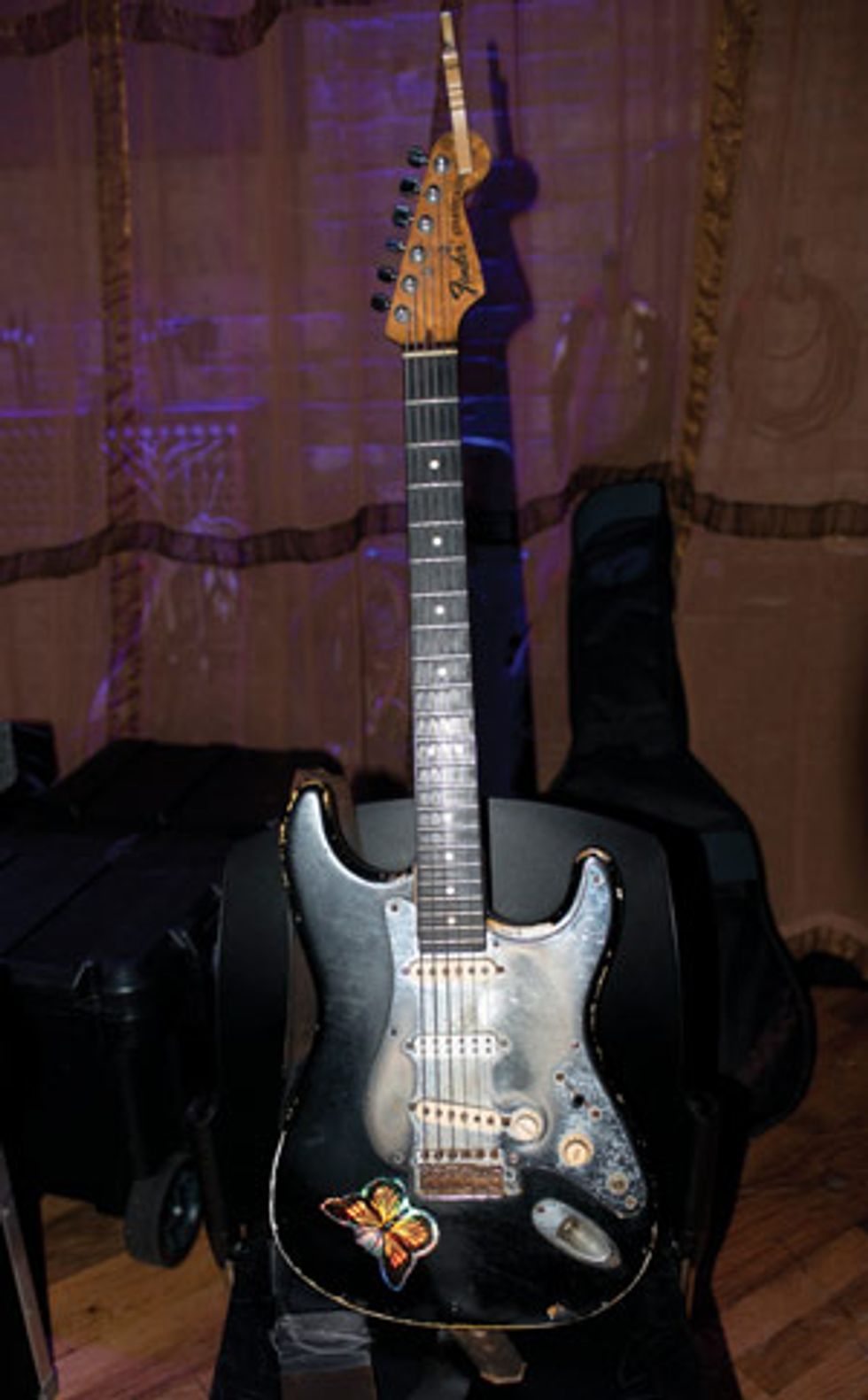
His main Strat has a ’68 body, an ebony-topped ’80s neck, and stock pickups except for the middle unit, which has recently been switched from a Duncan Hot Rails to a stacked humbucker. Photo by Paul Natkin
Do you mostly play in open tunings?
It comes and goes. Right now, I’m about
50/50—but it used to be 90/10 in terms
of open tuning versus standard.
What tunings do you favor?
Open D, for the most part, because it
gives me some nice low end. There are
a bunch of open D songs on the new
record: “Send Me a Friend,” “Black Tar,”
“Black Eye Galaxy”….
… A lot of the heavier material.
Oh yeah. I put on real heavy strings, .013–
.054s, and raised the action, so there’s big
tone. That helps with the slide, as well.
Onstage, you’re never without a slide—you switch between slide and fretting
notes pretty seamlessly.
It’s a comfort thing for me to have the
slide on the pinkie. Even if I don’t need
it—and I could certainly use that extra
finger sometimes—it’s almost a little
security blanket. It’s like, if I have an
open tuning and a glass slide, all of a
sudden I feel safe.
Which specific players influenced your
slide work?
In my early years, certainly Ry Cooder.
He doesn’t play heavy, but he plays a different
kind of heavy. That’s one of the
debates I had with Stanton—that, a lot
of times in the past, I had been a little
too tongue-in-cheek and comical in my
slide approach. Doing those fun, cool
little licks. Live, I would play really heavy,
with a really big tone, but on my records I
would always bring it back into Ry Cooderland.
That’s stopped now.
Anders Osborne's Gear
Guitars
Fender Strat with ’68 body, Fender 1962 Strat reissue, Fender 1957 Strat reissue,
Gibson Les Paul Standard goldtop with P-90s, 1959 Gretsch 6118 Double
Anniversary, 1966 Guild Starfire V, 1969 Martin D-18, 1963 Gibson B-25, 1961
Gibson J-45, custom McAlister flattop, Yamaha AC3R, Yamaha CPX1200
Amps
Category 5 signature VOW, Category 5 1900 models
Effects
D’Addario .011–.052 sets, D’Addario .013–.054 sets (for ’68 Strat tuned to open
D), Planet Waves 1mm picks, handmade bottleneck slide (“Preferably from Italian
wine bottles—they have a warmer and denser tone”), 1972 handmade custom
black leather strap with caveman imprints, TC Electronic PolyTune, Morley ABY
pedal, Planet Waves cables
Tell us about your primary stage guitar—the black Strat that looks like it’s been
put through the ringer.
[Laughs.] Yeah, I got that guitar in 1986,
and it’s a mix of things: It has a ’68 body
and what I believe is an early-’80s custom
bird’s-eye maple neck, with an African
ebony fretboard. There’s a metal pickguard,
and there used to be a Seymour Duncan
Hot Rails pickup in the middle position
but I swapped it out and put a stacked
humbucker in there. The other pickups
are stock. It’s banged up, and there’s a tone
knob missing at the moment, as well.
So it’s something of a mutt.
It is. It was already modified to how it is
now when I got it, except for that middle
pickup. I saw it at a music store in New
Orleans and the guys working there didn’t
even know what it was. So they charged
me 170 bucks for it. But it’s an interesting
guitar. It’s not even originally black. You
can see that it had this beautiful, creamy
sunburst finish that was just painted right
over. Somebody messed it up real good, but
it’s perfect for me—I love it—and it’s been
my main guitar ever since.
YouTube It
Listen to the jagged electric
blues coming out of Osborne’s
“mutt” black Strat as he employs
his unorthodox picking
style at 4:30.
This performance at The
Independent San Francisco
showcases Osborne improvising
to find the groove with drummer
Stanton Moore’s band.
Osborne unleashes his inner Cajun
Swede on “Louisina Gold”
from his latest album, Black
Eye Galaxy.
